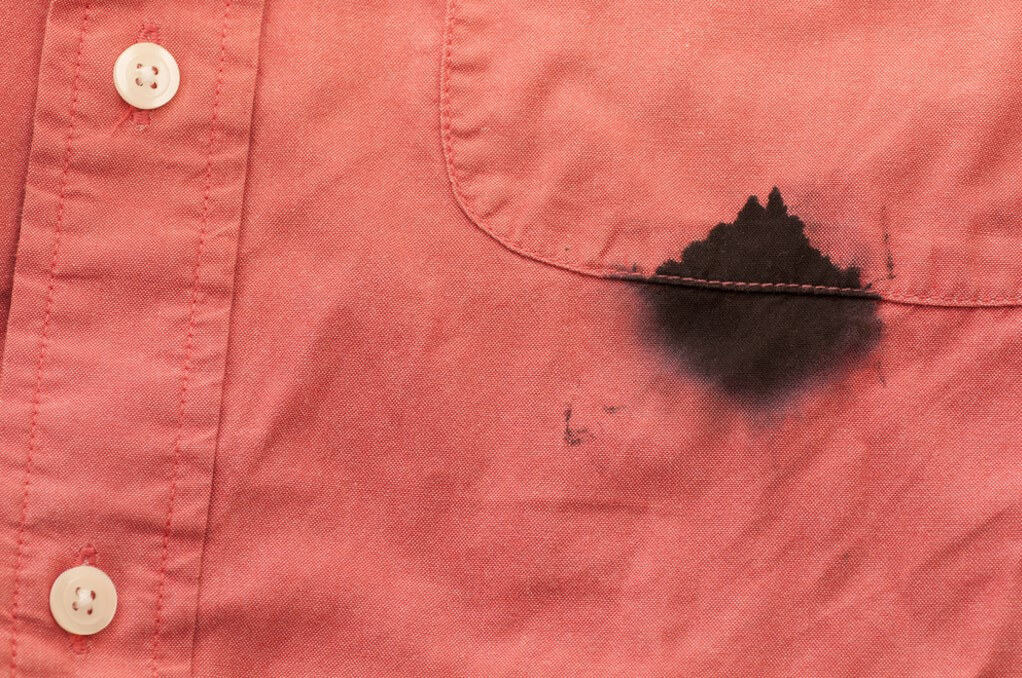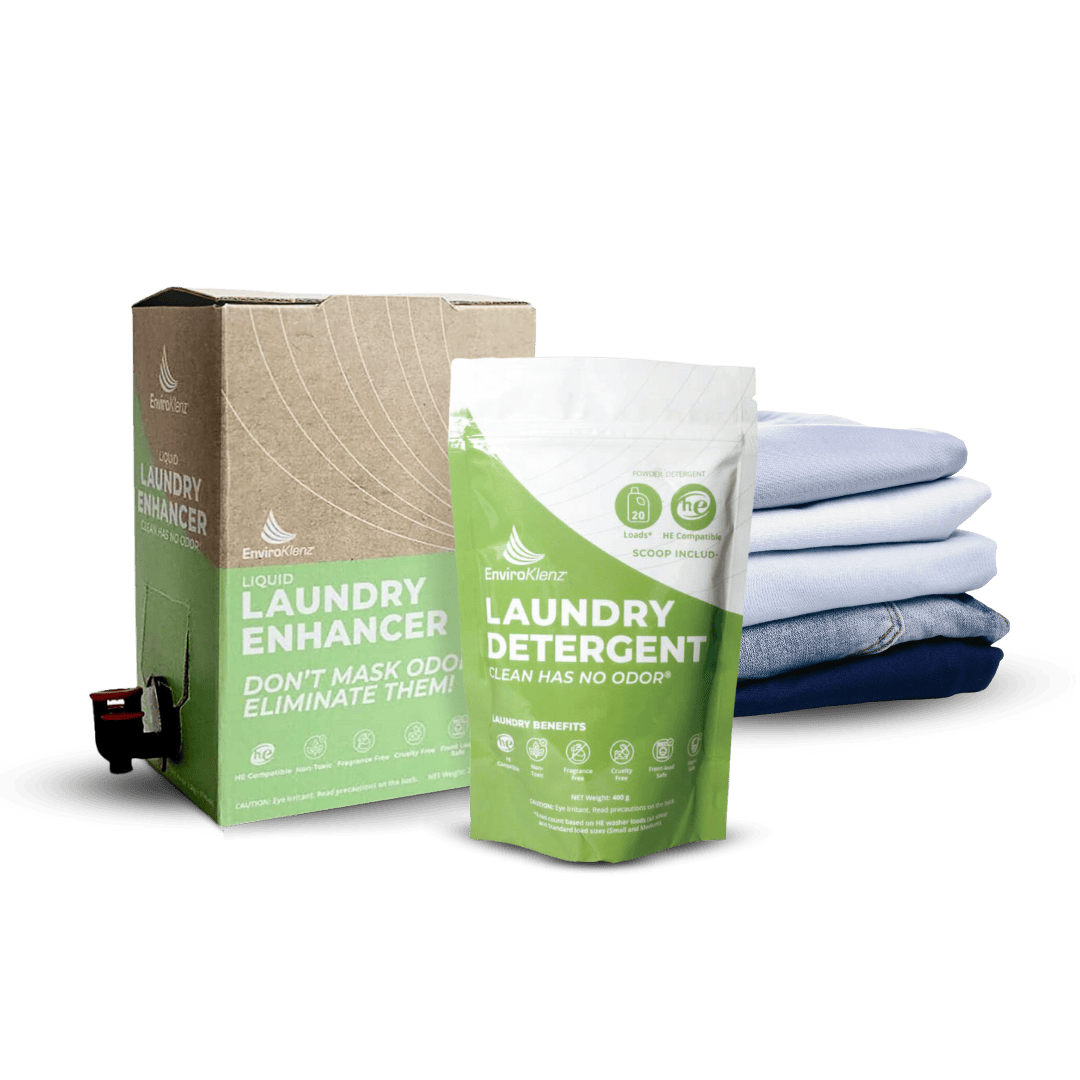Occasional stains on clothes are inevitable, no matter how careful you are. And while it might be a lot easier to deal with fresh stains, age-old stains can be difficult to get rid of.
That said, safe cleaning products can remove old marks and smears on garments and other clothing items. This article discusses how to remove old stains from clothes using two effective methods.
But first, let’s briefly talk about a few chemical ingredients to avoid when choosing a stain-removal product for your clothes.
Ingredients to Avoid in Stain Removers
Conventional stain removers readily come to mind when people think of tackling an old or stubborn stain. No doubt, many popular stain removers can get rid of stain stains with stellar results, but the downsides of these products are simply not worth using them.
Most stain removers found on store shelves contain a blend of potentially harmful chemical ingredients that are unsafe for human health. Many of these ingredients can interfere with the normal functioning of hormones, and in many cases, the harsh chemicals can trigger allergies or worsen asthma symptoms.
Avoid stain removers containing any of these ingredients:
- Chlorine bleach: If ingested, chlorine bleach can be harmful to the body. The Environmental Protection Agency (EPA) describes chlorine as a potent irritant to the lungs, upper respiratory tract, and eyes. The chemical can burn the skin when exposed.
Additionally, chlorine can damage the fibers of clothes over time and remove the optical whiteners in white clothes, making them less white.
In a nutshell, chlorine bleach is not safe for you or your clothes. Do not use it for stains or whitening.
- Artificial fragrances: Synthetic scents are used to mask the unpleasant smells of harsh chemicals in stain removers. Although this results in a nice-smelling fragrance, the mix of ingredients in some fragrances can trigger allergies or disrupt the endocrine system.
- Quaternium-15: This substance is essentially a salt that acts as a surfactant and preserves the properties of many conventional stain removers by releasing formaldehyde. The substance is linked to skin irritation and triggers allergies.
- 2-Butoxyethanol: Besides the risk of harming the skin and eyes, the Centers for Disease Control and Prevention (CDC) warns that this substance can damage red blood cells and may cause kidney problems.
- Methylisothiazolinone: This synthetic preservative in most regular stain removers may cause eye damage, dermatitis, respiratory irritation, and skin burns.
The next time you shop for stain removers, read the ingredient list before choosing a product.
Non-Toxic Stain Removers
As you already figured, knowing how to remove old stains from clothes goes beyond applying any random product to stains. When dealing with stains, choosing a non-toxic stain remover is the safest option for your health and prolongs your clothes’ life.
We recommend choosing a non-toxic, fragrance-free product formulated with natural stain-fighting ingredients. The EnviroKlenz Laundry Detergent is an excellent option for stain removal.
It works well even for the worst stains and does not contain artificial brighteners, harsh chemicals, or dyes.
Choosing fragrance-free products for stain removal is your best bet if you or someone in your household is allergic to cleaning products or has respiratory problems like asthma.
The internet is rife with many DIY stain removers, many of which recommend using white vinegar, baking soda, or other readily-available pantry items.
While these solutions may work for fresh stains, they are hardly effective for old, set-in stains. However, another option is to use solvents, such as plain vodka or rubbing alcohol. And we’ll see how to do that in the next section.
How to Remove Old Stains From Clothes: Two Effective Methods
Generally, you will need warm or hot water to successfully remove old and stubborn stains from clothes. Fill a basin or bucket with water before using the following methods. Also, lay a clean towel over your work surface.
You will need a clean washcloth or garment-safe stain brush for blotting the stains. However, avoid using a brush to blot stains set in delicate fabrics like silk and wool.
It is usually best to put your cleaning solvent (rubbing alcohol or vodka) in a spray bottle, as this allows you to easily dispense the solvent.
1. Pre-Treat the Stain With Liquid Detergent and Wash
Organic stains (such as a red wine stain, blood stain, or grass stain) can easily be removed with liquid laundry detergent.
When removing stains:
- Wet the stained cloth or garment in hot or warm water to prewash stain, or you can use a prewash stain remover.
- Place it on your work surface.
- Rub a small amount of liquid detergent directly on the stained area.
- Allow the liquid laundry detergent to sit for a while until the stained area is completely soaked.
- Blot the stain with a washcloth, paper towel, or brush to remove as much visible stain as possible.
- Put the item in your washing machine and run your preferred wash cycle.
- Rinse thoroughly and hang to dry.
Depending on the liquid laundry detergent used, you may need to repeat the process a few times to eliminate the tough stain completely.
2. Pre-Treat the Stain With a Solvent and Wash
Rubbing alcohol or plain vodka is great for pre-treating ink, lipstick, machine dust, makeup stains, nail polish, and other inorganic stains.
To remove old stains from clothes using a solvent:
- Wet the stained item in hot water.
- Place the garment on your work surface.
- Using a spray bottle, apply plain vodka or rubbing alcohol on the stubborn stain.
- Gently blot the stain using a brush or washcloth to remove the stain.
- Wash the pre-treated garment in your washing machine, rinse properly, and dry.
Quick Note: If you have stains from baby food or formula, coffee stain, tea stain, or a stain from water-based paint, you want to use cool water instead of hot water.
Salvage Your Favorite Clothes
Don’t let old stains stop you from donning your favorite wear. Regardless of the stain removal method you choose, getting rid of set-in stains will require some elbow grease.
In other words, getting your clothes back to wearable condition may take a few tries. However, threadbare clothing items may not be worth all the hassle, as you may damage them further trying to remove stains.
EnviroKlenz® Medical Disclaimer:
“Any information that is provided on this website is not for the use by any commercial or personal entity without expressed written consent of the blog author. The material and statements illustrated within this blog are not intended to diagnose, treat, cure, or prevent any diseases or medical conditions. Nor does the author in any way guarantee or validate the validity, totality, or efficacy of any claims and will therefore not be held responsible for the content of any claims. Always consult your medical physician for any specific medical advice or recommendations.”









